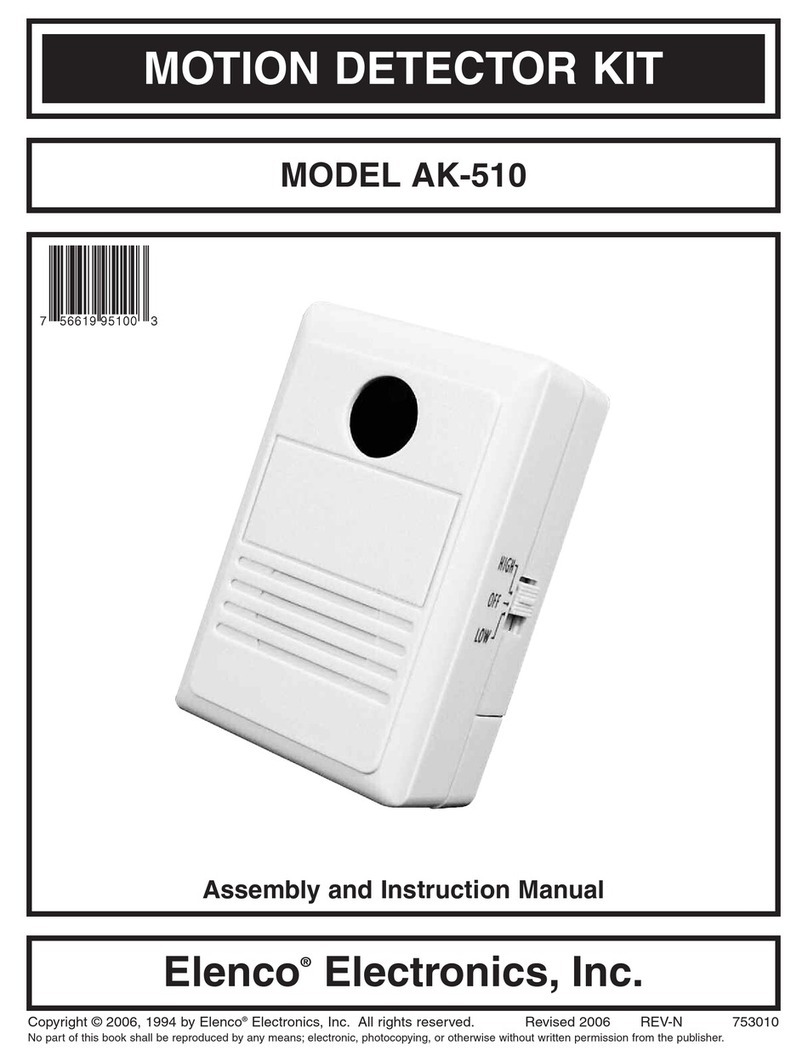
-3-
The heart of the Lie Detector is the 555 IC. The 555
timer has become one of the basic and extremely
successful chips in the semiconductor field.
Understanding this device will prove most helpful,
as you will surely encounter its use many times in
the future.
THE 555 IC TIMER
The block diagrams and pin connections of the 555
chip are shown in Figure 1. In the Lie Detector, the
555 timer operates as an astable multivibrator or
free-running oscillator. It generates a continuous
output of high and low pulses. Resistors R1, R2,
VR1 and capacitor C1 determine the frequency at
which it oscillates. The combination of components
are called an RC circuit. If you vary the resistor or
capacitor, you will change the frequency or pitch of
the oscillator. In the LOW mode, the circuit
oscillates from 16 to 31Hz, and 35 to 600 in the
HIGH mode.
Placing resistance across the two washers (P1, P2),
causes the circuit to oscillate. As the resistance
changes, so does the frequency. Your body GVR
(galvanic skin resistance) is placed in the circuit
when you hold the two washers. Under stress, your
GVR decreases, causing the oscillator frequency to
increase. If you were to let go of the washers, the
oscillator would stop. The output at pin 3 may be
high or low.
To change the sensitivity, the circuit has a LOW and
HIGH switch (SW1). In the LOW position, resistor
R1 (1M) is placed in series with the trim pot. A
greater change in resistance is needed to affect the
oscillator frequency. In the HIGH position, resistor
R1 is removed and a change in resistance across
the washers is easily detected. You can adjust the
sensitivity in either mode using trim pot VR1.
The output of the 555 timer appears on pin 3 as a
square wave, which drives the speaker and LED.
The speaker and LED are not connected to pin 3
directly, but through a coupling capacitor (C2) and a
current limiting resistor (R3). As the output goes
high and low, this causes the speaker to sound and
the LED to flash at the same rate.
CIRCUIT OPERATION
GND
TRIGGER
OUTPUT
RESET 4
3
2
1
5
6
7
8+Vcc
DISCHARGE
THRESHOLD
CONTROL
VOLTAGE
UPPER
COMPARATOR
INTERNAL
VREF
Q2
– +
OUTPUT
BUFFER
2 VCC
3
R
R
VCC
3
Q1
CONTROL
FLIP-
FLOP
LOWER
COMPARATOR
– +
R
S Q
R Q
RESET
Figure 1



























